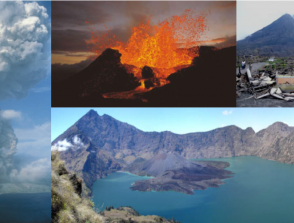ANR TOBA: Impact of Last Toba multi-eruptions on ocean-atmosphere dynamics
Start: 01/01/2025 - End: 31/12/2028
National partnership
Coordinators : Annachiara Bartolini
Host institutions :
Muséum National d’Histoire Naturelle Paris
Partner institutions :
Sorbonne Université, Commissariat à l’Energie atomique et aux énergies alternatives : Laboratoire des Sciences du Climat et de l’Environnement ISTEP, IPGP, Institut des Géosciences de l’Environnement – CNRS
Related teams :
Volcanic Systems
Project funded by the French Agence Nationale de la Recherche (ANR), under grant “ANR-24-CE01-4195-02 (project TOBA)”
The Young Toba Tuff (YTT) super-eruption occurred 74 ky ago in Sumatra and is considered to be a single, brief, cataclysmic volcanic event. However, its climatic and environmental impact is the subject of lively debate. The critical issues remain the quantity and dynamics of its sulphur emissions, which are key to determining the climatic consequences of an eruption through the cooling role of stratospheric sulphate aerosols. Our recent results support a multi-eruptive Toba activity during the Earth’s entry into the last ice age. Compared to a single cataclysmic event of a few days, a prolonged multi-eruptive activity could have a significant climatic impact by accumulating oceanic radiative cooling from repeated sulphur emissions and by perturbing atmosphere-ocean dynamics. The addition of volcanic sulphur could also lead to ocean acidification, damage oceanic biocalcifiers and interfere with background atmospheric CO2, although these effects have not been thoroughly investigated.
To address these important issues, our project aims to:
- Constrain the rate of eruptive activity of the Young Toba super-volcano.
- Estimate its sulphur emission budgets and dynamics.
- Reveal their impact on the surface temperature and ocean-atmosphere dynamics of the tropical Indian Ocean, including ocean acidification.
To achieve our objectives, we have assembled an unprecedented team with a broad range of expertise in environmental and earth sciences (volcanology, paleoclimatology, paleoceanography, micropaleontology, glaciology, geochemistry, sedimentology), access to key archives (ice and marine cores), high performance analytical instrumentation and expertise in small sample geochemical techniques (tephra, polar ice, monospecific foraminiferal assemblages), all of which are essential to the success of the project. This new, unprecedented dataset will provide the basis for a better understanding of the climate forcing of super-volcanoes in the past and in the future.





